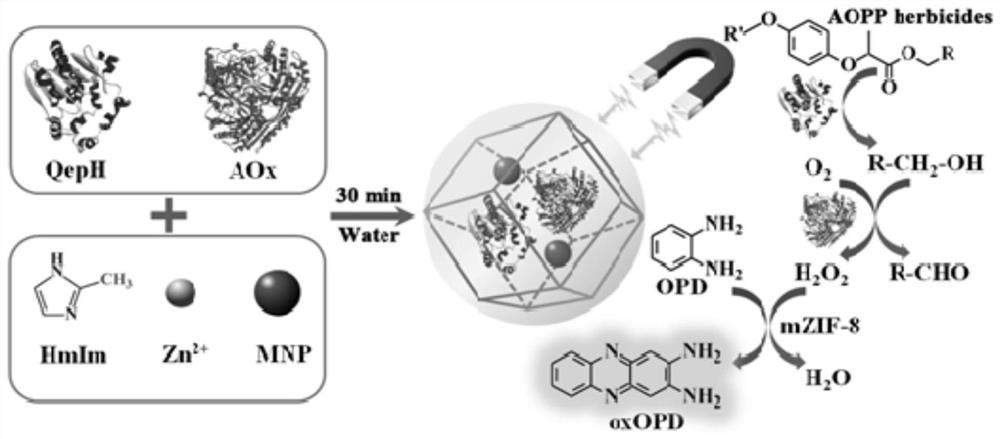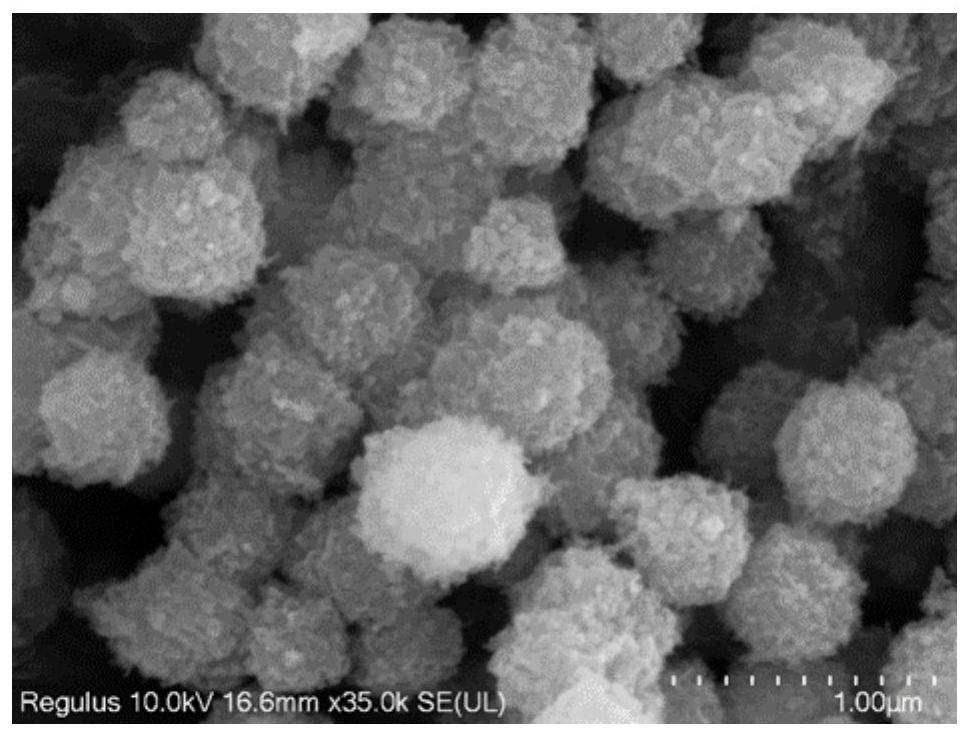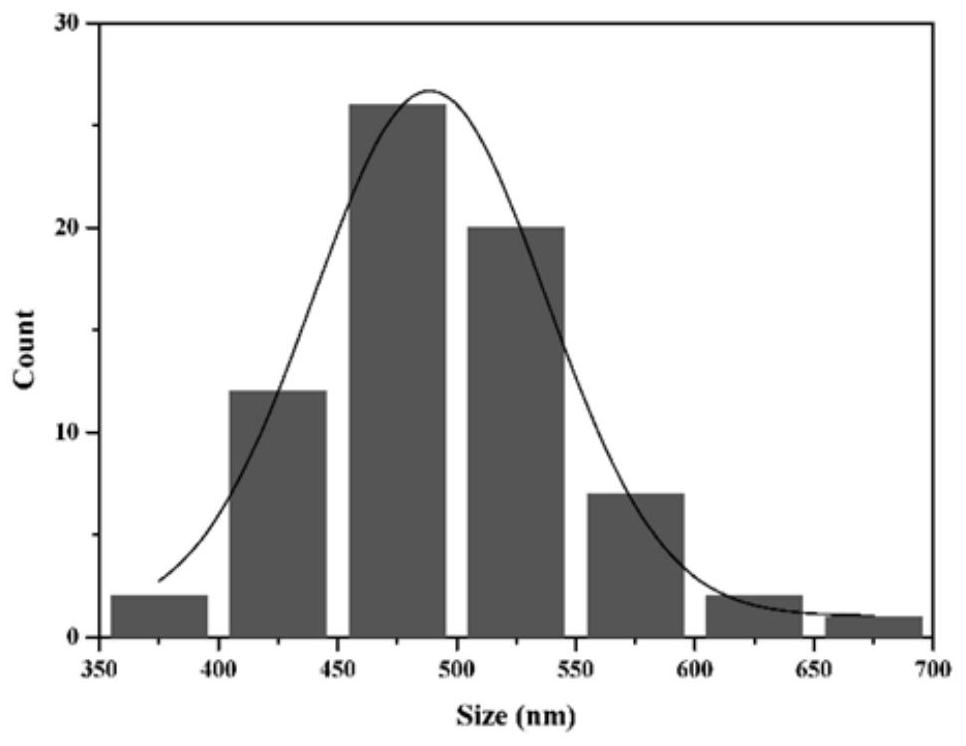Colorimetric detection method for aryloxyphenoxypropionate herbicide based on magnetic nanocrystal enzyme preparation
A technology of aryloxyphenoxypropionate and magnetic nano, which is applied in the direction of nanotechnology for sensing, nanotechnology, nanotechnology, etc., and can solve the problems of high cost, complicated preparation process, low sensitivity and stability, etc.
- Summary
- Abstract
- Description
- Claims
- Application Information
AI Technical Summary
Problems solved by technology
Method used
Image
Examples
Embodiment 1
[0039] Example 1: Preparation of magnetic nanocrystal enzyme preparation QpeH / AOx@mZIF-8
[0040] 1. Magnetic Fe 3 o 4 Synthesis of Nanoparticles (MNPs)
[0041] Add 6.5g FeCl to a 200mL round bottom flask 3 ·6H 2 O and 3.342 g FeSO 4 ·7H 2 O, completely dissolved in 100mL deionized water, heated the system to 50°C and stirred under vacuum for 30min, then quickly added 12.5mL of ammonia water to the system and raised the temperature to 75°C, stirred for 1h with magnetic force, then added 12.5mL of 1.5mol L -1 Trisodium citrate, warm up to 85°C and stir for 1.5h. After the reaction is complete, collect Fe 3 o 4 The nanoparticles were then washed three times with ethanol and deionized water successively, and dried under vacuum at 60 °C for 6 h.
[0042] 2. Extraction and purification of AOPP herbicide hydrolyzing esterase QpeH
[0043] 2a, the extraction of esterase QpeH
[0044] Escherichia coli BL21(DE3) containing the prokaryotic expression plasmid pET-29a-qpeH of t...
Embodiment 2
[0055] Example 2: Characteristic detection of QpeH / AOx@mZIF-8 nanocrystal enzyme preparation
[0056] Such as figure 2 As shown by the scanning electron microscope, QpeH / AOx@mZIF-8 has a regular dodecahedral crystal form, with a rough surface and an average diameter of about 494.5nm ( image 3 ). X-ray diffraction (XRD) ( Figure 4 ) and Fourier transformedinfrared spectroscopy (FT-IR) ( Figure 5 ) detection results showed that MNPs, QpeH and AOx were embedded in ZIF-8 crystals, QpeH / AOx@mZIF-8 had a complete ZIF-8 crystal morphology, and the addition of MNPs, QpeH and AOx did not affect ZIF-8 crystals Formation. Thermal gravimetric analysis (TGA) ( Figure 6 ) results showed that the loading of QpeH and AOx in mZIF-8 was about 8%. N 2 Adsorption test results ( Figure 7 ) shows that the QpeH / AOx@mZIF-8 crystal has typical I-type adsorption-desorption curve characteristics, and its specific surface and pore diameter measured by BET method are 526.2m 2 g -1and 15.2...
Embodiment 3
[0057] Example 3: Performance evaluation of QpeH / AOx@mZIF-8 enzyme sensor for detection of AOPP herbicides
[0058] Disperse 5 mg of QpeH / AOx@mZIF-8 in 1 mL of NaAc solution (0.2 M, pH 4.0), add 1 mL of OPD (1.0 mM) and 3 mL of different concentrations of quizalofop-p-ethyl (QpE), oxaprop-p-ethyl ( FpE) or high-efficiency haloxyfop (HpE) solution, and then incubated at room temperature in the dark for 10 min. After removing QpeH / AOx@mZIF-8 in the reaction solution with a magnet, detect the absorbance value OD at 450nm 450 . Such as Figure 9 As shown, in the wide concentration ranges of 6.7-214.6 μM, 6.7-214.6 μM and 13.4-268.2 μM, the OD of QpeH / AOx@mZIF-8 sensor 450 It has a good linear relationship with the concentration of QpE, FpE or HpE, and obvious color changes can be observed by naked eyes. According to the equation: LOD=3σ / S (where σ represents the standard deviation of the biosensor response value relative to the blank, and S represents the slope value of the ca...
PUM
| Property | Measurement | Unit |
|---|---|---|
| diameter | aaaaa | aaaaa |
Abstract
Description
Claims
Application Information
 Login to View More
Login to View More - R&D
- Intellectual Property
- Life Sciences
- Materials
- Tech Scout
- Unparalleled Data Quality
- Higher Quality Content
- 60% Fewer Hallucinations
Browse by: Latest US Patents, China's latest patents, Technical Efficacy Thesaurus, Application Domain, Technology Topic, Popular Technical Reports.
© 2025 PatSnap. All rights reserved.Legal|Privacy policy|Modern Slavery Act Transparency Statement|Sitemap|About US| Contact US: help@patsnap.com



